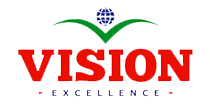Course Description
Lean Tools & Techniques:
Lean Tools and Techniques are a tested and proven methodology for improving the competitiveness of MSME sector. Main Lean tools & techniques are mentioned below (but not limited to):
1. 5S System: The 5S system is a workplace management which helps in getting the “junk out of the work area and set of procedures to keep it that way. 5S stands for Sort, Set in Order, Shine, Standardize & Sustain.
2. Visual Control: Visual controls such as cartoons, charts, light signals, Lane marking on floor, Safety instructions, Warning signs, Poka-Yoke instructions etc., can be displayed all over the workplace.
3. Standard Operating Procedures (SOPs): All verbal instructions should be converted to SOPs to remove dependency on skilled personnel in achieving required product quality level, consistency, effectiveness and efficiency.
4. Just in Time (JIT): It’s a Japanese manufacturing philosophy to make the right product in right quantity at the right time. This almost results in zero inventory and shortest possible cycle time.
5. KANBAN System: In this, components are pulled by assembly or subsequent work centers and the containers are replenished with the right quantities by the previous work center, which reduces the inventory of unwanted components.
6. Cellular Layout: In this improved manufacturing system, familywise component completion is aimed at within the smaller self-contained cell, which is a part of a big factory, as compared to operation wise completion in traditional functional layout.
7. Value Stream Mapping: It covers all activities, both value added and non-value added, and helps in arriving at best layout of all resources required for making the product.
8. PokaYoke or Mistake Proofing: It is again a Japanese technique used to prevent errors occurring at their source of origin, and it finally leads to a “Zero Defect‟ situation.
9. Single Minutes Exchange of Dies or Quick Changeover (SMED):Applying ingenious methods, setup time is minimized and brought to less than ten minutes; thereby smaller batches as required by the customer can be taken up for manufacturing.
10. Total Productive Maintenance (TPM): TPM involves operators, maintenance staff and management working together to improve overall operation of any equipment. Operators, who first identify noisy or vibrating motors, oil or air leaks, can be trained to make simple repairs to prevent major and costly break downs.
11. Kaizen Blitz or Rapid Improvement Process: It is an intense management programme, which results in immediate change and bottom-line improvement. Both management staff and workers are involved in this.
12. 7 QC Tools: The 7 QC tools are fundamental instruments to improve the process and product quality. They are used to examine the production process, identify the key issues, control fluctuations of product quality, and give solutions to avoid future defects.
13. Jidoka (Low-Cost Automation): Design equipment to partially automate the manufacturing process (partial automation is typically much less expensive than full automation) and to automatically stop when defects are detected. After Jidoka, workers can frequently monitor multiple stations (reducing labor costs) and many quality issues can be detected immediately (improving quality).
14. Hinjunka (Level Scheduling): A form of production scheduling that purposely manufactures in much smaller batches by sequencing (mixing) product variants within the same process. It reduces lead times (since each product or variant is manufactured more frequently) and inventory (since batches are smaller).
Sample Certificate






